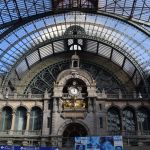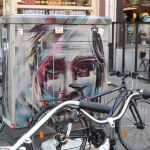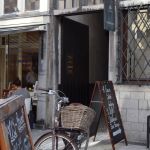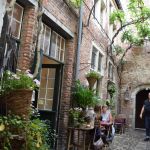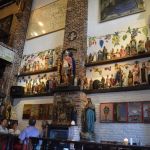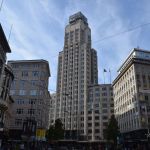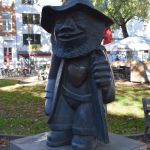The citizens of Antwerpen are a very proud people. If you ask them what is the best thing in Brussels, they will simply say “the train to Antwerpen”. The citizens of Antwerpen are also a very tolerant people. With 170 nationalities, they are the most diverse city in Europe after Amsterdam, with 180.
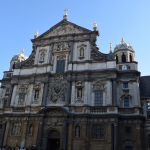
Named the fourth most beautiful train station in the world by Newsweek in 2009, The Antwerpen train station stands tall and proud right next to the Diamond district. It was designed by Louis Delacenserie in 1895 and completed in 1905.
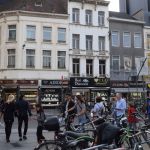
84% of all diamond trade passes through Antwerpen. Given the amount of diamonds in the city, the diamond quarter has thousands and thousands of security cameras. So, if you ever feel like you are in danger, the diamond quarter might be the safest place that you can be.
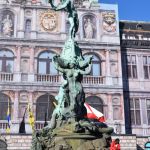
In the middle of the Grote Markt (i.e. Big Market) stands Brabo's Monument explaining the origin of the city's name. Legend says that a giant named Antigoon guarded the Scheldt river. Every merchant that wanted to pass and head to the harbor had to give him half of the goods that he intended to sell. If not, the giant would cut of one of the merchant's hands and would throw it in the water. One day Brabo passed on the river by the giant and cut off his hand, throwing it to the water as well, thus vanquishing the giant. In Dutch hand werpen means "hand throwing" and eventually resulted in Antwerpen. This statue shows Brabo in the process of throwing the giant's hand and the giant lay at Brabo's feet.
The building under renovation behind the statue is Town Hall, started in 1561 and completed in 1564.
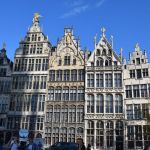
The houses used to house the richest guilds of the city. The (faux-)gold statues on top served as a way of representing their trade. For example, the one in the middle is of Saint George fighting the dragon, which represents the guild of the bow and arrow. A statue more to the right depicting a fox served to represent the guild of fencing because its members had to be cunning, not necessarily powerful.
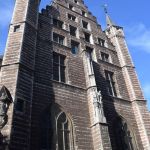
The Butcher's guild was also a very rich guild but it does not stand with the others due to the smell that comes with the job. Instead, it is a couple hundred meters northeast of the Town Hall. Nonetheless, the Vleeshuis (i.e. Meat house in Dutch) didn't hesitate to show off their wealth. The Vleeshuis is significantly larger than the other guild houses and it is built with alternating white and red stones to give the effect of bacon. Currently, the building is used as a museum describing the life of a butcher during that time.
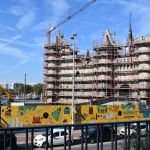
Hetsteen is the oldest building in Antwerp. It was originally used as a fortress and then as a prison by Philip II. In fact, that is the reason why the castle is made out of two different color stones. While Philip II was using it as a prison, he needed more space due to his Spanish Inquisition so he had a second story built. Not only could you not choose whether to go to prison or not, but you were forced to pay to stay there and receive the minimal amount of comfort: 7 cents per night, 2 cents to eat, 1 penny to go to the bathroom and even more if you wanted to bring your own bed in. Needless to say that many people couldn't afford for even basic comforts and often died in the prison.
Up until recently, though, the castle was actually used as a youth center for creativity and dance. After the current renovations are complete, it will again change its purpose and will be used by the Office of Tourism instead.
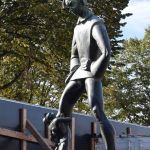
The statue of the giant 'Lange Wapper' stands in front of Hetsteen. Legend says that he was the original occupant of the castle. At night, the giant would go out and shape-shift into various living things to scare the drunks roaming around at night. The two tiny figures of this statue represent two terrified drunks at the feet of 'Lange Wapper'.
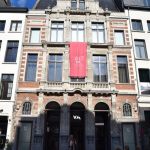
Given the importance of diamonds to the Antwerpen economy, it is only natural that there is a museum on diamonds in the city.
Interestingly, the Jewish community has historically been the group that have controlled most of the world's diamonds. This is logical considering that the Jewish people have often been a persecuted people and have often been deprived of the right to own land. As a result, they have needed to find some way to store their wealth in a way that is easily mobile. The solution: diamonds.
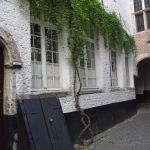
While this may seem like a teeny tiny alley to us, this is how most of the streets were a long time ago.
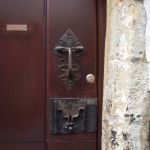
This unique keyhole is specifically designed for drunk people who cannot get the key in the keyhole. With this contraption, all that the drunkard has to do is get the general location and let the key be guided down.
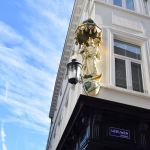
When Philip II of Spain gained control of Flandres, he wanted to convert the people to Catholicism. However, it was already too late because most of them were already Protestants. So Philip II thought of a scheme: only next to a Virgin Mary could you install a lamp on the street. As a result, the only way to have light on the street was by installing Virgin Mary's everywhere. This was a big deal because Protestants don't believe in intermediaries between them and God. They don't believe in saints either. As a result, by forcing the locals to get used to the idea of Virgin Mary and other saints, they will be more open to converting to Catholicism. This of course didn't work so Philip II began the Spanish Inquisition. Nonetheless, the lamps remained peppered throughout the city.
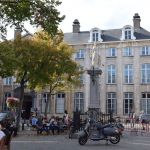
The large building in the back is Christophe Plantin's printing press. The printing press was set up in 1555 and run as a family business until the mid-1600s. Even though the printing press was no longer functioning, it was kept in the family and nothing inside the building was changed. As a result, when the city bought the building at an auction towards the mid-1800s and noticed the authenticity of the building, it created a printing press museum, which opened in 1877.
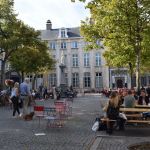
The printing press museum is located on Vrijdagmarkt (i.e. Friday Market). Every Friday, in this square there is an auction market from nine in the morning until two in the afternoon. All bids start at three Euro and go up if people bid on it and go down if they don't. If the price goes down to zero, the item is thrown in the garbage.
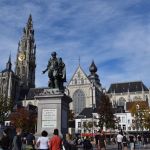
The statue of Pieter Paul Rubens, the most famous painter from Antwerpen, is located Groenplaats (i.e. Green square), with the city's Cathedral of Our Lady towering just behind him.
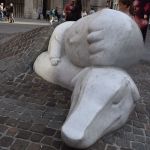
The statue of Nello & Patrache is a major attraction for Japanese tourists who are familiar with the characters from the novel A Dog of Flanders (1872). The story tells of a young orphan boy who dreams of becoming a painter so he visits the Cathedral of Our Lady every day with his dog to admire the paintings by Rubens. Unfortunately, due to several misfortunes, the boy and the dog end up dying in their sleep one cold winter night in the Cathedral. The statue is thus rightfully situated right in front of the Cathedral.
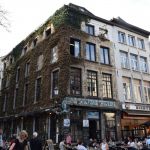
Elfde Gebod is located right next to the Cathedral and its interior is decorated with all sorts of religious objects. The name of the bar cleverly translates to "Eleventh Commandment".
